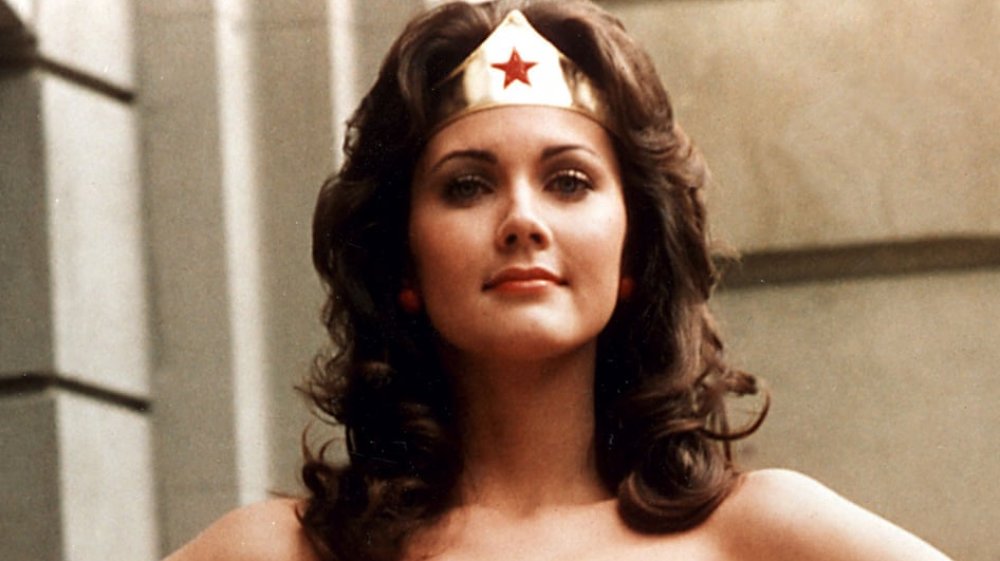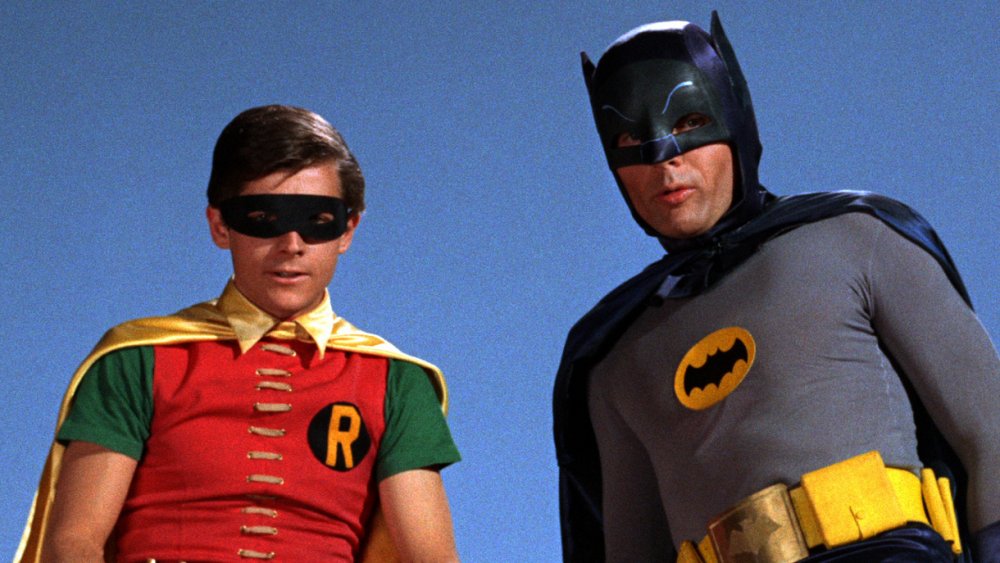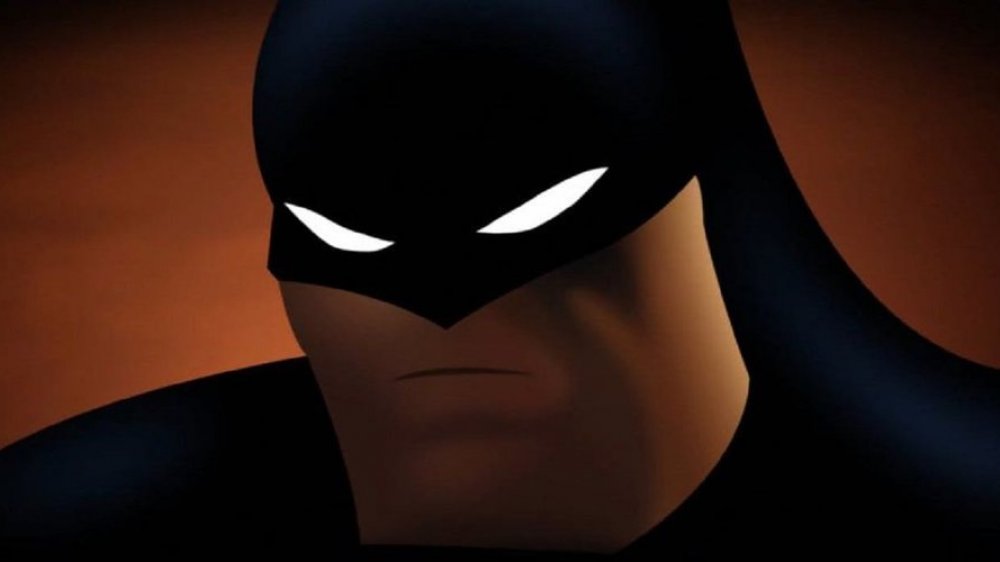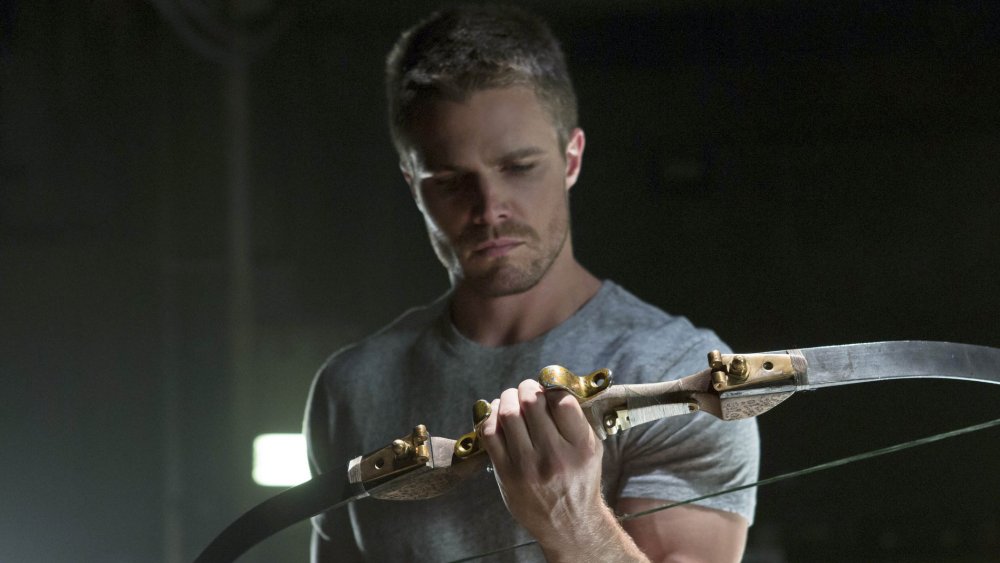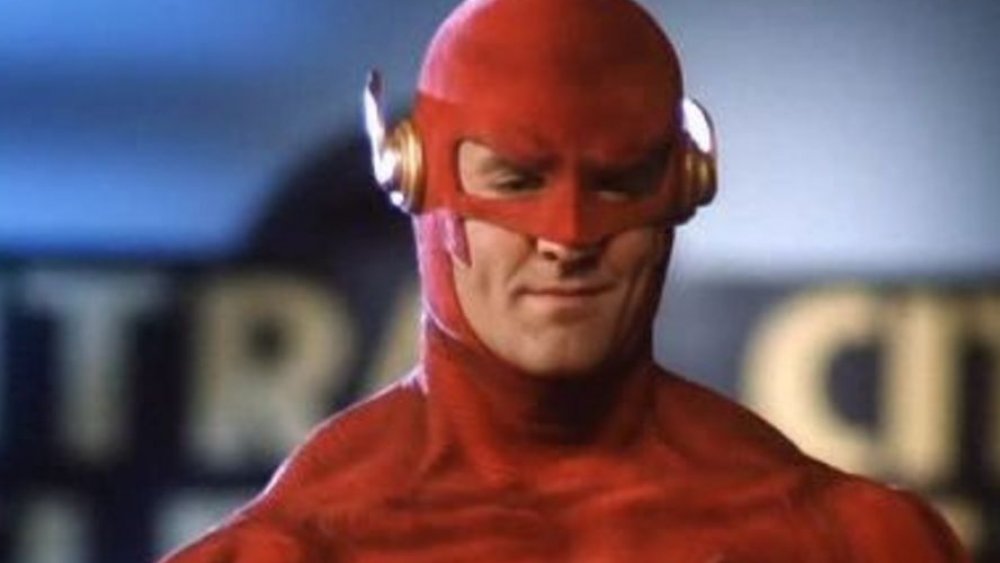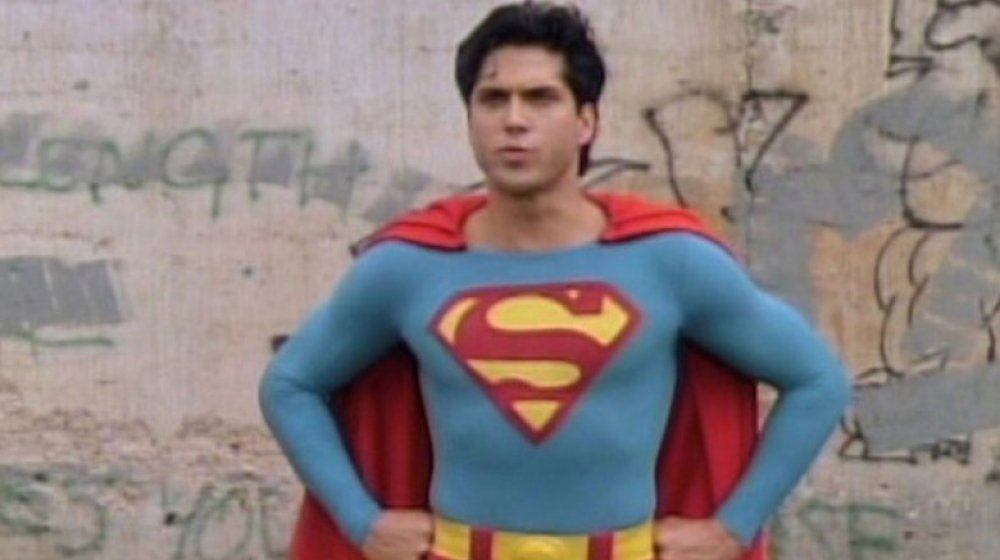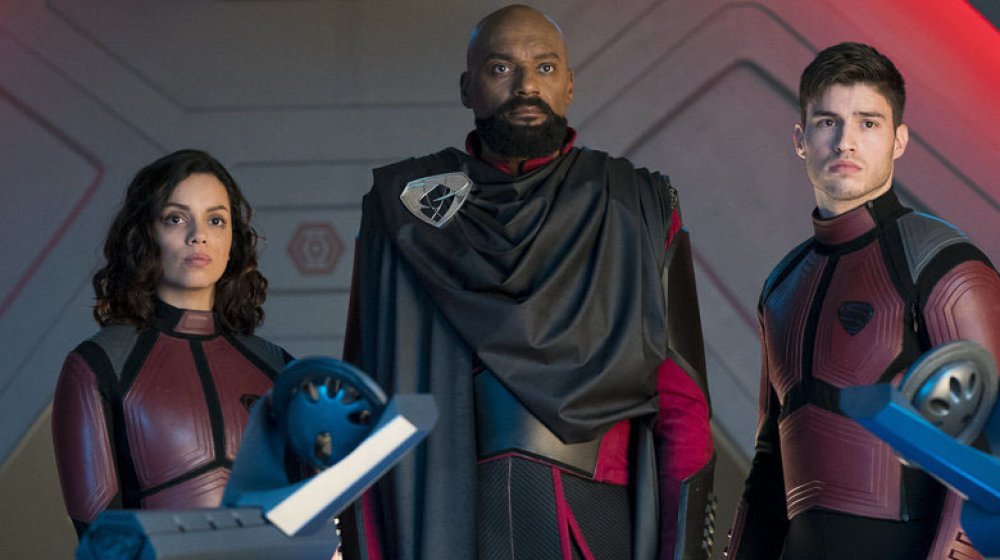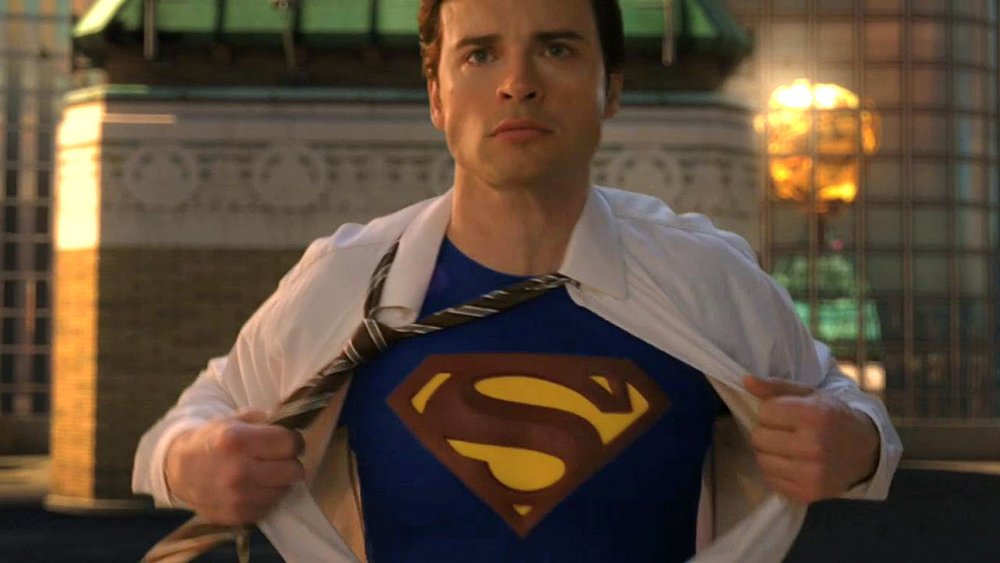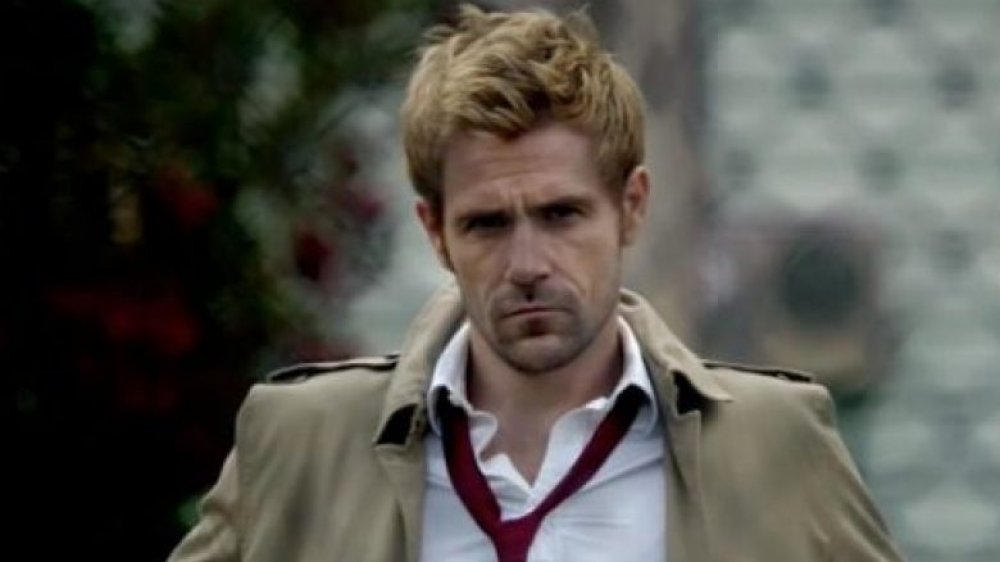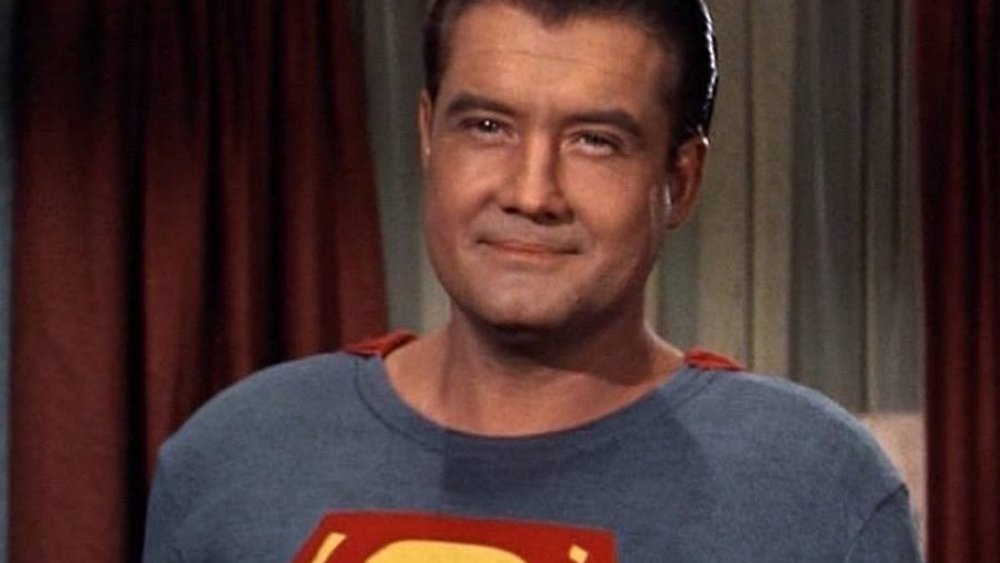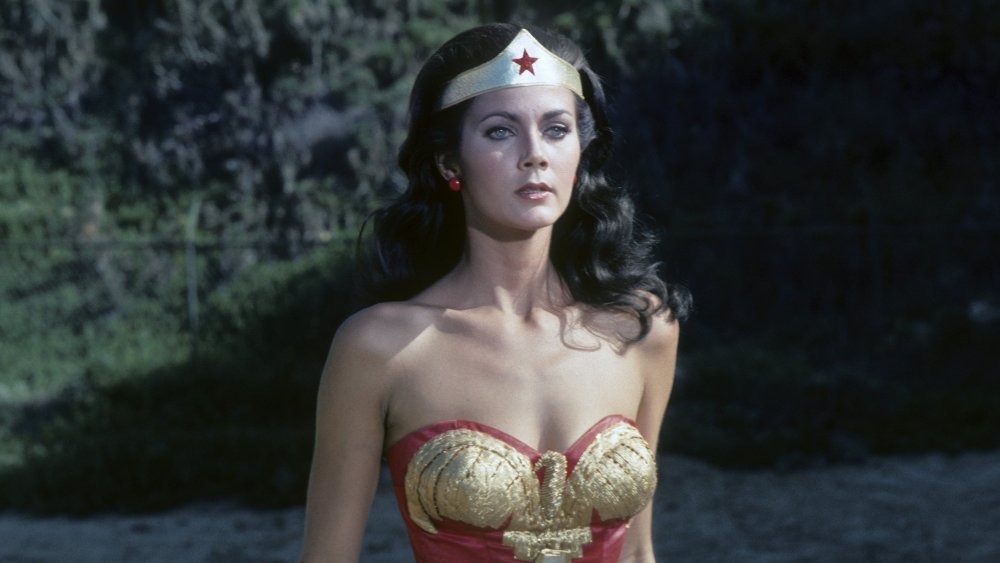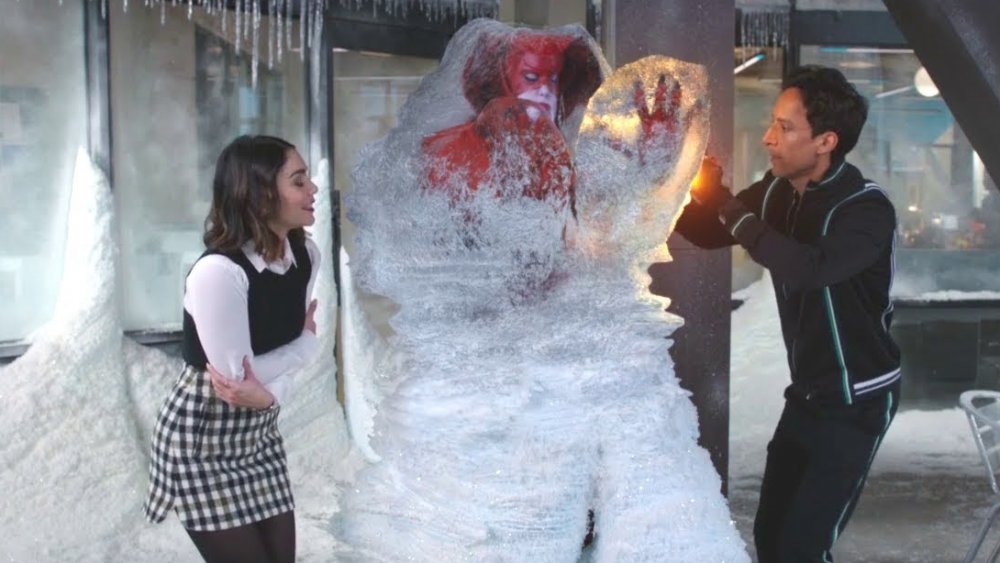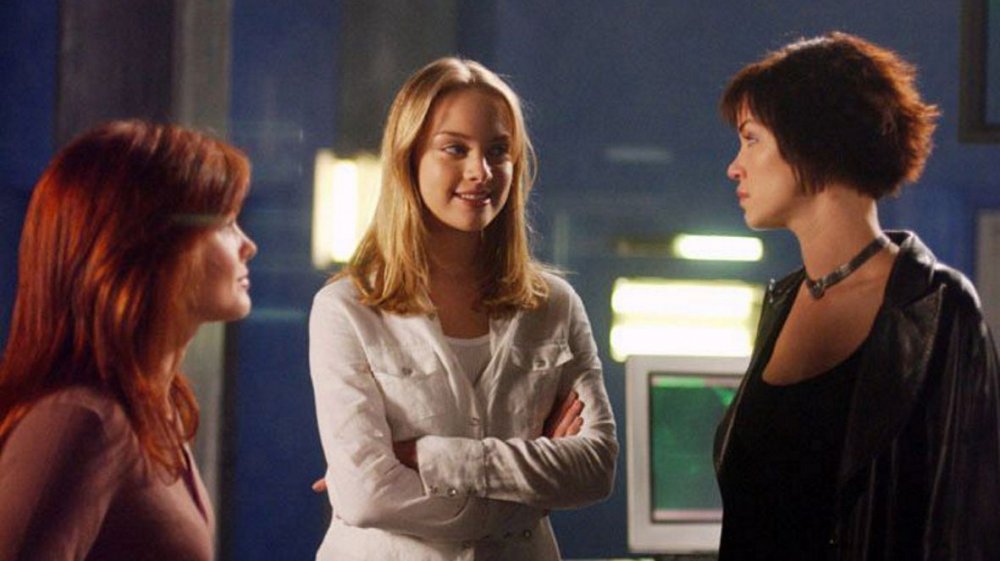The Real Reason These DC TV Shows Were Canceled
DC Comics is a pillar of superhero storytelling. Superman, Batman, Wonder Woman, and all their caped-and-cowled friends have been wowing the world for decades — and the world shows no signs of falling out of love with them. Kids wear Wonder Woman backpacks. The Joker is capable of carrying a movie all on his own. Aquaman overcame decades of ridicule to become the wave-riding dude-king of the silver screen.
With so many wildly inventive characters and plots to their name, it's only natural that DC's entertainment empire extends to the small screen. Today, there are lots of DC-themed options on TV, both serious-minded and comedic, live-action and animated, and kid-friendly and very much not so. Batwoman, Legends of Tomorrow, Harley Quinn, Doom Patrol – the list is ever-growing and always entertaining. But all things must end, even seemingly unstoppable superhero shows. Given DC's long history of bringing their characters to the boob tube, they've got no shortage of canceled series in their attic. These are the DC TV shows that met an untimely end.
The novelty of campy Batman wore off quickly
As the mid-1960s dawned, American television suddenly became deeply, noticeably weird. Two shows about monstrous families, The Munsters and The Addams Family, competed for eyeballs, while My Favorite Martian looked at life with a wacky alien. Perhaps the wildest of all programs of this era, however, was ABC's Batman. Debuting in early 1966, the show is like a comic book come to life, complete with bright colors, over-the-top plots, zany villains (portrayed by B-list celebrity guest stars hamming it up), and action words ("Kapow!" "Biff!" "Thunk!") that splatter across the screen. Leading the charge is Adam West as a truly surreal Batman, alongside Burt Ward as the excitable Robin.
Early in its run, Batman was so popular it ran twice a week and pulled some truly spectacular ratings. But the show ended up being something of a shooting star: Bright and dazzling, but short-lived. In its second season, Batman's two weekly airings fell to #37 and #58 in the ratings. These numbers continued to drop in season three, leading ABC to shut down production on the not-so-Dark-Knight's show in 1968. NBC wanted a shot at the series, but when executives inquired, they learned that the show's sets had already been destroyed. Rebuilding them would have come at tremendous expense, and so Batman stayed canceled ... but definitely not forgotten.
Batman: The Animated Series ended before it could decline
Batman: The Animated Series is the complete opposite of the 1960s Batman series. The moody, thoughtful, noir-inflected show's successful run showed that there were plenty of reasons to take a serious approach to superheroes — even when the media in question is aimed at kids. This Batman won all kinds of Emmy Awards, spun off the theatrical feature Batman: Mask of the Phantasm, and voice actor Kevin Conroy still tops lists of the best actors to portray Batman (Mark Hamill's version of the Joker is similarly regarded as world-class and definitive).
In short, Batman: The Animated Series is a very good show that was appreciated in its own time. But in 1995, after producing just 85 episodes, it ended production. The reason? The writers ran out of ideas, and they didn't want to force it. "They didn't want to compromise on the quality of what they had and start creating kind of silly stories," Conroy revealed in 2018. Fans might mourn the series' abrupt end, but they also must appreciate the wisdom of this decision.
Stephen Amell was ready for Arrow to end
A serious-minded, well-budgeted prime-time show about superheroes hadn't really been attempted in years by the time the 2010s rolled around. But the success of the Marvel Cinematic Universe proved the existence of a superhero-hungry audience, and so DC and The CW seized their chance with 2012's Arrow, a show about the vigilante crime-fighter Green Arrow. Now, Green Arrow has never been all that well known outside of comics circles. It didn't matter — the show, filled with well-choreographed action sequences and strong performances, brought in ratings The CW had rarely enjoyed. Over the years, the network would greatly expand its superhero lineup to include other "Arrowverse" shows based on DC properties, including The Flash, Supergirl, and Black Lightning.
Arrow made previously little-known Canadian actor Stephen Amell into a star, and he dutifully portrayed Oliver Queen for eight seasons. That, according to Amell, was plenty. The CW announced that the eighth season of Arrow would be its last. Mere moments later, Amell posted a Facebook Live video explaining that he was the reason for the show's demise. He'd decided to walk away, in part to spend more time with his family.
The Flash couldn't speed past Cheers
The CW added The Flash to its lineup in 2014, starring Grant Gustin as Barry Allen, the titular speedster in the bright red suit. After posting some of the network's best-ever debut numbers, the show remains popular ... which stands in sharp contrast to an earlier attempt to bring the Flash to the small screen. In the fall of 1990, CBS launched The Flash starring John Wesley Shipp as the crimson-clad sprinter. Like the era's standard of superhero entertainment, 1989's Batman, The Flash is dark, gritty, and full of crime. CBS, certain The Flash would be a runaway success, spent money lavishly, dropping a stunning $6 million on the pilot episode alone. Then, in a scheduling move both bizarre and foolhardy, CBS put the 60-minute Flash in an hour-straddling time slot: Thursday nights from 8:30 PM to 9:30 PM, opposite NBC's ultra-popular A Different World and Cheers, and Fox's hot drama Beverly Hills, 90210. The Flash couldn't compete, and CBS put the brakes on the too-expensive and little-seen Flash after just one season.
Superboy wasn't the right Superman show for producers
The late '80s syndicated adventure series Superboy takes everything about Superman and young-adult-ifies it. Not yet the assured defender of truth, justice, and the American way, or even a seasoned reporter, Superboy finds Superman around the age of 20, still growing into his powers and just starting to claw his way up the corporate ladder of the Daily Planet. In season one, John Haymes Newton portrayed the young hero, but was fired when he asked for a salary increase around the same time he arguably violated a morals clause in his contract with an arrest for public drunkenness. Producer Ilya Salkind replaced him with Gerard Christopher, and the show's ratings improved, with the show ranking among the top 10 most watched syndicated TV series.
The Adventures of Superboy ran for four seasons, and was a strong enough draw to continue, if not for Superman-controlling studio Warner Bros. The studio had started pre-production on a new Superman TV series, Lois & Clark: The New Adventures of Superman, set to air in prime-time on ABC, meaning it was a much higher profile and more profitable project than the modest Superboy. Warner not only refused to keep Superboy in production, but filed a lien against the series, blocking reruns from the air. Thus ended Superboy, slain by, well, Superman.
Krypton didn't attract a very big audience
Krypton is well-known in comics lore as the home planet of Superman. It is often depicted as a gleaming and futuristic land, as in the 1978 Superman movie ... until it blows up, of course. It's a big part of the Man of Steel's mythos, but not one much explored until the debut of the SyFy series Krypton in 2018. Co-created by Blade and The Dark Knight writer David S. Goyer, the superhero soap focuses on Seg-El (Cameron Cuffe), grandfather of Kal-El and scion of a prominent family, who attempts to restore his good name and save Krypton from descending into corruption and destruction.
Despite this Superman show lacking Superman, Krypton performed decently, giving SyFy its best new show numbers in four years, with first season episodes averaging an audience of about 1.8 million viewers. The network eagerly ordered a second season, which aired in 2019. Unfortunately, audiences no longer seemed to be interested in the doomed, crusading ancestors of the man who would one day be Clark Kent. Ratings cratered to an average of just over 400,000, with the show's de facto finale drawing only 350,000. SyFy subsequently did to Krypton the show what a turbulent core did to Krypton the planet, and eliminated it from existence.
Smallville ended because teen Superman got too old
Superman fans have rarely had to suffer through a decade without a TV show devoted to their fave. After Superboy ended in 1992, Lois & Clark ran from 1993 to 1997, followed by The WB's 2001 effort, Smallville. Smallville is half teen soap, a la Dawson's Creek, and half superhero show about a young Clark Kent coming to accept his powers and identity within the confines of Smallville, Kansas.
Smallville was such a reliable hit for The WB (and later, The CW) that executives just kept renewing the show. But the series' inherently short shelf life, given its focus on teen Clark Kent, loomed over it. As it turns out, 10 years and more than 200 episodes is how long a story about Superman-before-he's-Superman can last. By the time the final Smallville season ended in 2011, star Tom Welling was 34 years old — almost a decade older than Christopher Reeve had been when he donned the cape and big red S for 1978's Superman movie. Also, the show's ratings had fallen hard, down to under three million viewers in season 10 from a high of about six million in season two.
Constantine was on too big of a network
John Constantine, a cynical, joke-cracking supernatural detective, certainly tries to be a good guy ... despite also being a con artist and a warlock. This so-called "Hellblazer" got his own comic series after his 1985 debut in an issue of Swamp Thing, and became a fan favorite approaching the level of cult icon — so much so that Keanu Reeves played him in the big-budget 2005 film Constantine. Critics found it middling, but it earned a sizable $230 million at the box office, which certainly influenced the decision to bring Constantine to television in 2014.
Welsh star Matt Ryan portrayed the stubbly sleuth, and proved to be just one of the reasons the show earned glowing critical notices. Nevertheless, Constantine could only attract a tiny audience. Its 13 episodes brought in an average of 4.5 million viewers – not nearly enough for a major broadcast network like NBC, which canceled it after one season. "In retrospect, I don't think it should have been on NBC," show co-creator David S. Goyer said in a press event (via Variety), implying that other outlets have different, less-imposing standards. "If it had been on a basic cable channel, it could still be on."
Adventures of Superman died when George Reeves did
1952's The Adventures of Superman was the first superhero show on American TV. George Reeves starred as the Man of Steel, who, as the show's memorable and exciting intro tells viewers, is "faster than a speeding bullet, more powerful than a locomotive, and able to leap tall buildings in a single bound." Despite a relatively low-budget production, Adventures of Superman boasts some impressive special effects — Reeves really did look like he was flying to the millions of fascinated kids who watched each week.
Superman flew off the air abruptly after its sixth season in 1958, although plans for two more seasons were in the works. This untimely end was brought about first by the death of actor John Hamilton, who portrayed blustery Daily Planet editor Perry White. Producers hired Pierre Watkin to replace Hamilton, but before new episodes could be shot, tragedy struck again. George Reeves died at age 45 amid mysterious circumstances ruled a suicide by authorities. Still, producer Whitney Ellsworth floated the idea of revamping Adventures of Superman to focus on young sidekick Jimmy Olsen, with Man of Steel shots assembled via stock footage of Reeves and shots of a stunt double with his face hidden. Larson said no, and the show didn't continue.
It's a wonder more people didn't watch Wonder Woman
Never mind the extremely successful Wonder Woman film with Gal Gadot — to millions, Lynda Carter is and always will be the definitive Wonder Woman. The action-packed 1970s Wonder Woman series in which she starred is fondly remembered today — it's funny, exciting, and heralded a new age of superhero media. Even those who've never watched the show know about Carter's iconic transformation spin. But in its original run in a CBS prime-time slot, Wonder Woman wasn't particularly popular. In its first season, it ranked 45th in the ratings, then tumbled to 71 in season two, and rebounded a hair to 59 in its third and final season. CBS canceled Wonder Woman in 1979 due to its not-great numbers, but Carter's character lives on as a touchstone for fans. Sure, we all love watching Wonder Woman stride across a World War I battlefield in her blockbuster movie ... but that doesn't mean you don't want to watch her traipse about the groovy 1970s every now and then.
Powerless was powerless against cancellation
In early 2017, NBC added something new and different to its venerable stable of single-camera sitcoms. Powerless, produced by DC Entertainment, is a workplace sitcom like The Office or Superstore, but it is also a superhero show ... without superheroes. Vanessa Hudgens portrayed Emily Locke, director of research and development at a division of Bruce Wayne's Wayne Enterprises that makes products to help regular people deal with the fallout and property damage ofthe hero vs. villain battles that are a common occurrence in this world. Locke heads up a motley crew of comic archetypes, such as prankster Teddy (Danny Pudi), obnoxious boss Van Wayne (Alan Tudyk), and Ron (Ron Funches), a secret compatriot of Aquaman.
Powerless was maybe a little too comic book-y for the comedy crowd and a little too silly for the comic book crowd, and failed to make much of an impact on NBC's schedule. The network removed it from its Thursday night lineup before it had even finished airing its first short season.
Birds of Prey's audience quickly flew away
In the early 2000s, The WB enjoyed success with programming geared towards young women, ranging from dramas like Gilmore Girls to action-heavy fare like Smallville and Buffy the Vampire Slayer. In 2002, the network debuted Birds of Prey, which seemingly fit into both categories. Birds of Prey is set in a Gotham City abandoned by Batman, leading a team of women to fill the crime-fighting vacuum: Barbara Gordon, AKA Oracle (Dina Meyer), Helena Kyle, AKA Huntress (Ashley Scott), and psychic Dinah Redmond (Rachel Skarsten). They live in a clock tower and foil villains, usually the fiendish Harley Quinn (Mia Sara).
At first, The WB had a hit on its hands. The first episode landed 7.6 million viewers and the network's biggest debut ever in its 18-to-34 target demographic. Problems arose quickly, however: Those viewers didn't stick around. Ratings for the next five episodes fell hard and fast, and the show never made it past its first season. Birds of Prey was possibly ahead of its time: The CW, which sprang from the merger of UPN and The WB, now airs several hours of DC Comics-based content each week. This all culminated in the ambitious 2019-2020 crossover event "Crisis on Infinite Earths," pulling in characters from Arrow, The Flash, Batwoman, Supergirl, and Legends of Tomorrow. Ashley Scott even showed up for a Huntress cameo.
